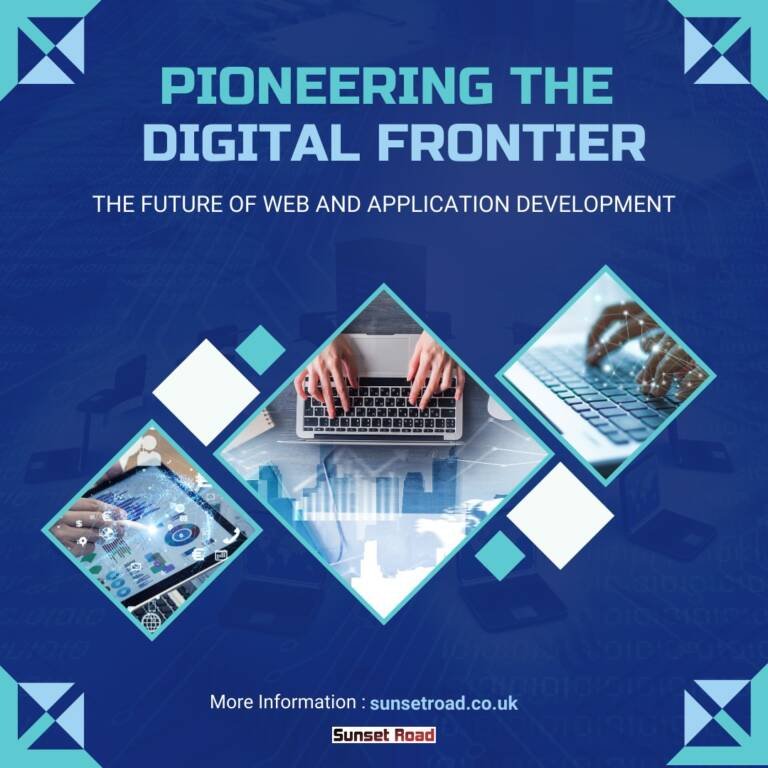In the rapidly evolving world of web and application development, staying ahead of the curve is crucial for businesses and developers alike. As technology continues to advance at an unprecedented pace, new trends and technologies are shaping the future of how we design, build, and interact with digital platforms. This blog explores the key emerging trends and technologies in web and app development that are set to transform the industry in the coming years.
1. Progressive Web Apps (PWAs): Bridging the Gap
Progressive Web Apps (PWAs) represent one of the most significant advancements in web development. By combining the best features of both web and mobile applications, PWAs offer a seamless user experience across different devices. They are designed to work offline, provide push notifications, and offer a native-like experience on the web.
Key Benefits:
- Offline Access: PWAs can function without an internet connection, ensuring users can access content anytime.
- Improved Performance: With service workers and caching, PWAs load quickly and provide a smooth experience.
- Responsive Design: PWAs adapt to various screen sizes, making them ideal for mobile and desktop use.
Examples:
- Twitter Lite: A PWA that offers a fast, engaging experience with offline capabilities.
- Spotify Web Player: Provides a seamless experience across devices with offline support and push notifications.
2. Artificial Intelligence and Machine Learning Integration
Key Applications:
- Personalization: AI-driven algorithms tailor content and recommendations to individual user preferences, increasing engagement.
- Chatbots and Virtual Assistants: AI-powered chatbots provide instant support and handle routine inquiries, improving customer service.
- Predictive Analytics: ML models analyze user data to forecast trends and behavior, aiding in decision-making and strategy.
Examples:
- Google Assistant: Uses AI to understand and respond to voice commands, integrate with various services, and provide contextual information.
- Netflix Recommendation System: Leverages ML to analyze viewing habits and suggest content tailored to individual preferences.
3. WebAssembly: Enhancing Web Performance
WebAssembly (Wasm) is a binary instruction format designed to run code on web browsers at near-native speed. It enables developers to write high-performance applications in languages like C, C++, and Rust and compile them to run efficiently in the browser.
Key Benefits:
- Speed: WebAssembly code executes at near-native speed, making it suitable for performance-critical applications.
- Language Flexibility: Developers can use multiple programming languages and compile them to WebAssembly for browser compatibility.
- Interoperability: WebAssembly modules can be integrated with JavaScript, enhancing existing web applications.
Examples:
- Figma: A web-based design tool that leverages WebAssembly for high-performance graphics rendering.
- AutoCAD Web App: Uses WebAssembly to deliver complex CAD functionalities directly in the browser.
4. Serverless Architecture: Simplifying Backend Management
Serverless architecture allows developers to build and deploy applications without managing server infrastructure. This approach abstracts the server management layer and automatically scales resources based on demand.
Key Benefits:
- Cost Efficiency: Pay-as-you-go pricing models ensure that developers only pay for the compute resources they actually use.
- Scalability: Serverless platforms automatically handle scaling, allowing applications to handle varying loads effortlessly.
- Reduced Maintenance: Developers focus on writing code rather than managing servers, improving productivity.
Examples:
- AWS Lambda: A popular serverless computing service that runs code in response to events and scales automatically.
- Azure Functions: Provides a serverless environment for running event-driven code with automatic scaling and integration with other Azure services.
5. Low-Code and No-Code Development Platforms
Low-code and no-code platforms are transforming the way applications are developed by enabling users with minimal coding experience to create functional applications through visual interfaces and pre-built components.
Key Benefits:
- Accelerated Development: Speed up the development process by allowing users to design applications using drag-and-drop interfaces.
- Increased Accessibility: Empower non-technical users to build and customize applications without writing code.
- Reduced Costs: Lower development costs by minimizing the need for specialized programming skills and reducing development time.
Examples:
- OutSystems: A low-code platform that facilitates rapid application development with a visual interface and pre-built modules.
- Bubble: A no-code platform that enables users to create web applications using a drag-and-drop editor.
6. 5G Technology: Enabling Faster and More Reliable Connectivity
The rollout of 5G technology is set to revolutionize web and app development by providing significantly faster data speeds and more reliable connections. This next-generation wireless technology will enhance the performance and capabilities of mobile applications and IoT devices.
Key Benefits:
- Faster Speeds: 5G offers higher data transfer rates, reducing latency and improving the user experience for data-intensive applications.
- Increased Bandwidth: More devices can connect simultaneously without performance degradation, supporting the growing number of IoT devices.
- Enhanced User Experience: Real-time applications, such as augmented reality (AR) and virtual reality (VR), will benefit from reduced latency and improved performance.
Examples:
- Augmented Reality Apps: 5G will enable smoother AR experiences with real-time data processing and low latency.
- Smart Cities: Enhanced connectivity will support the development of smart city solutions, such as connected infrastructure and intelligent transportation systems.
7. Blockchain Technology: Securing and Decentralizing Data
Blockchain technology, known for its role in cryptocurrencies, is finding applications in web and app development for securing data and creating decentralized systems. Blockchain offers a tamper-proof ledger and decentralized data storage, enhancing security and transparency.
Key Benefits:
- Data Integrity: Blockchain ensures data integrity through cryptographic hashing and consensus mechanisms.
- Decentralization: Distributes data across a network of nodes, reducing the risk of single points of failure and enhancing security.
- Smart Contracts: Automate and enforce contractual agreements through self-executing code on the blockchain.
Examples:
- Supply Chain Management: Blockchain is used to track and verify the authenticity of goods in the supply chain.
- Decentralized Applications (DApps): Apps built on blockchain technology offer decentralized functionalities and enhanced security.
8. Quantum Computing: Shaping the Future of Computational Power
Quantum computing, still in its early stages, promises to revolutionize the computing landscape by solving complex problems that are currently intractable for classical computers. While its direct impact on web and app development is still emerging, its potential implications are profound.
Key Benefits:
- Enhanced Computational Power: Quantum computers can solve problems exponentially faster than classical computers, with applications in cryptography, optimization, and complex simulations.
- Advanced Problem-Solving: Potential breakthroughs in fields like artificial intelligence and data analysis.
Examples:
- IBM Quantum: IBM’s quantum computing platform provides access to quantum processors for researchers and developers to explore new possibilities.
- Google Quantum AI: Google’s efforts in quantum computing aim to achieve quantum supremacy and advance computational capabilities.
Conclusion
The future of web and app development is being shaped by a diverse array of emerging trends and technologies. From the seamless experiences of Progressive Web Apps (PWAs) to the transformative power of Artificial Intelligence (AI) and Machine Learning (ML), developers have a wealth of tools and innovations at their disposal. Serverless architecture, low-code and no-code platforms, and the advent of 5G technology are further driving the evolution of digital platforms. Meanwhile, Blockchain and quantum computing are set to redefine data security and computational power.
As these technologies continue to evolve, developers and businesses must stay informed and adaptable to leverage the full potential of these advancements. Embracing these trends will not only enhance user experiences but also drive innovation and success in the ever-changing landscape of web and app development.












